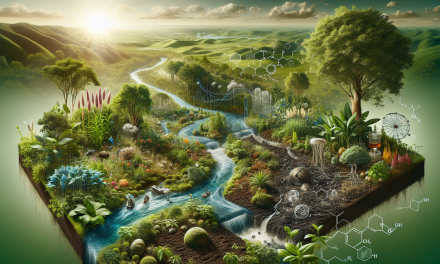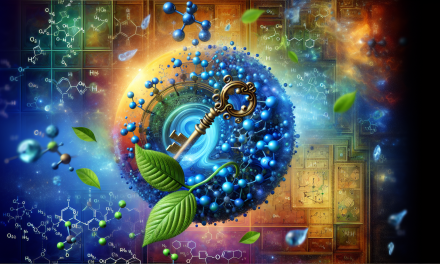Table of Content
- Introduction
- Understanding Environmental Chemistry
- Importance of Environmental Chemistry
- Applications and Impacts
- Exploring Soil and Water Chemistry
- Tips for Learning Environmental Chemistry
- FAQs
- Conclusion
Introduction
Understanding the complexities of our environment has become a pressing need, especially as we face numerous ecological challenges. Environmental chemistry plays a pivotal role in unpacking these complexities. But what exactly does it involve? This field combines both chemistry and environmental science, leading us to explore how chemical compounds affect the environment and how these interactions can be measured and managed.
Understanding Environmental Chemistry
At its core, environmental chemistry studies the chemical and biochemical phenomena that occur in our surroundings. This field investigates naturally occurring processes as well as human-induced alterations. For instance, pollutants released into the atmosphere can react chemically with natural components, resulting in unforeseen consequences. The research covers various environments, including soil, water, and air.
The Basics of Environmental Chemistry
To appreciate environmental chemistry, it helps to grasp some fundamental concepts. Chemical reactions can significantly impact environmental conditions. Thus, studying changing variables like temperature, pH, and pressure can reveal much about how pollutants behave in nature.
A Closer Look at Chemical Compounds
Various chemical compounds play a role in environmental science. For instance, heavy metals, such as lead and mercury, can have substantial toxic effects on wildlife and humans alike. Additionally, understanding organic compounds, like pesticides and herbicides, provides insights into their decomposition and effects on ecosystems over time.
Importance of Environmental Chemistry
Environmental chemistry shines light on numerous global concerns, including climate change, pollution, and resource depletion. As we delve deeper into these issues, we realize that solutions will emerge from informed decisions grounded in scientific understanding.
Contributions to Environmental Policy
Results from environmental chemistry research inform policy decisions, highlighting the significance of regulations to reduce pollution and protect natural resources. Thus, decision-makers equipped with scientific insights can create meaningful changes in environmental practices across industries.
Innovations in Environmental Remediation
Furthermore, our understanding of environmental chemistry facilitates innovations in environmental remediation. For example, bioremediation strategies utilize microorganisms to degrade pollutants in contaminated sites, effectively restoring the ecological balance. A detailed exploration of environmental chemistry can unveil the strategies we can implement to maintain this balance. Discover more about it in Unlocking the Secrets of Environmental Chemistry.
Applications and Impacts
Environmental chemistry extends its reach into various sectors, influencing diverse fields like agriculture, manufacturing, and waste management. Understanding how chemicals react in these varied contexts can lead to better practices and outcomes.
In Agriculture
The agricultural sector relies heavily on chemicals, including fertilizers and pesticides. Understanding their implications on soil health and water quality is crucial for sustainable farming practices. Innovative application techniques can minimize chemical runoff into local water bodies, enhancing ecosystem health.
In Industrial Applications
Many industries face pressure to comply with environmental standards. Thus, chemical engineers and environmental scientists collaborate to design processes that reduce waste and pollution. Advancements made through embracing environmental chemistry not only foster sustainability but can also improve cost-efficiency.
Exploring Soil and Water Chemistry
Delving into the specifics of soil and water chemistry reveals the intricacies of our natural systems. An understanding of these areas improves our ability to manage resources sustainably. For instance, exploring nutrient cycling in soil can enhance agricultural productivity while minimizing adverse environmental impacts. Learn more about soil and water interactions in this comprehensive guide: Mastering Environmental Soil and Water Chemistry: A Comprehensive Guide.
The Interconnectedness of Soil and Water
The relationship between soil and water extends beyond mere interaction. For instance, the chemical composition of soil greatly influences water quality entering lakes and streams. Understanding these interactions lays the groundwork for creating effective management strategies to mitigate water pollution.
Tips for Learning Environmental Chemistry
Embarking on the journey to understand environmental chemistry can feel overwhelming. However, breaking down the concepts into manageable pieces makes the process enjoyable and rewarding. Here are some tips to consider:
Start with the Basics
Begin with foundational concepts in chemistry and environmental science, helping you build a solid understanding before diving deeper into specific topics.
Engage with Real-World Examples
Connecting theoretical knowledge to real-world applications fosters greater understanding. Explore case studies or local environmental issues to see chemistry in action.
Collaborate with Peers
Team up with fellow learners or join study groups. Working together can enhance your understanding and expose you to diverse perspectives.
Leverage Online Resources
Utilize online resources and communities to deepen your knowledge. Websites like Mastering Chemical Engineering: Essential Concepts and Practical Solutions provide valuable insights into the core principles of chemical engineering, which is often related to environmental chemistry.
FAQs
What is the scope of environmental chemistry?
The scope of environmental chemistry includes studying the chemical composition of air, water, and soil and understanding how human activity affects these environments. It provides insights into pollutant behavior, remediation strategies, and guides environmental policymaking.
How can I apply environmental chemistry knowledge in daily life?
You can apply this knowledge by making informed choices about cleaning products, reducing waste, and advocating for sustainable practices in your community. Learning about the environmental impact of different substances can help you make eco-friendlier choices.
Conclusion
Environmental chemistry serves as a bridge between chemistry and real-world ecological issues. By exploring this intriguing field, we can better address the challenges of pollution and environmental degradation. Whether through understanding soil and water interactions or the role of chemical regulations, knowledge from environmental chemistry empowers us to make informed decisions and foster a sustainable future. As you continue your journey, remember to seek resources that deepen your understanding, connect with experts, and stay informed about the latest developments in this critical field. Together, we can unlock the potential for positive change.





